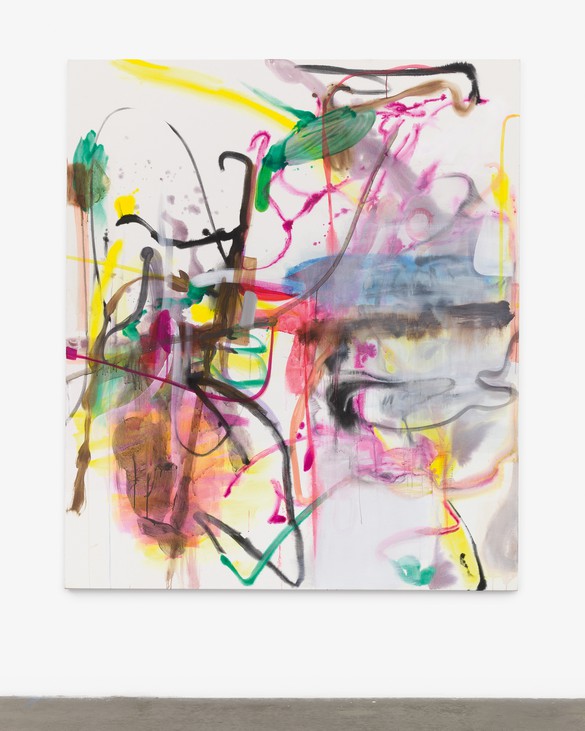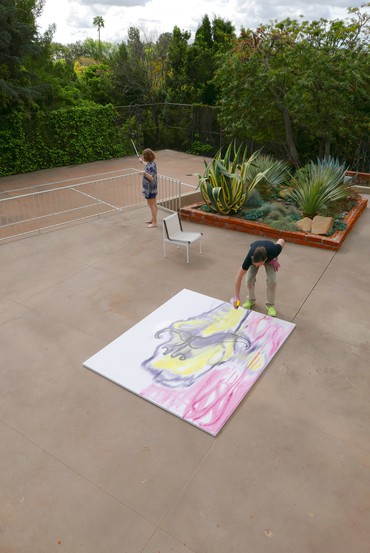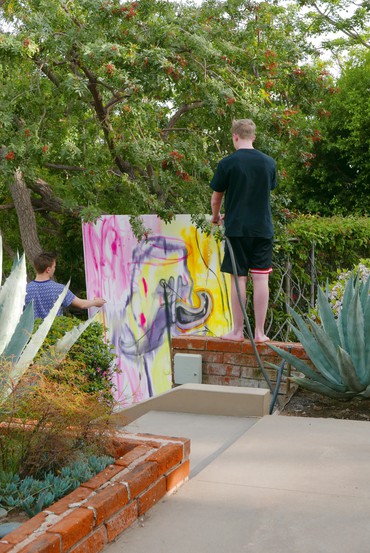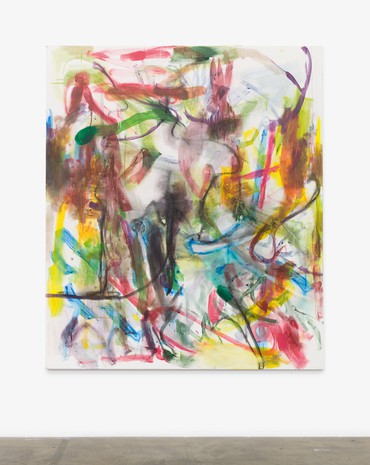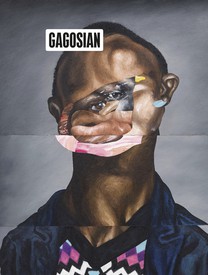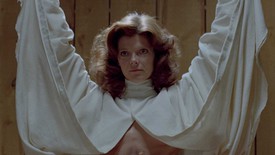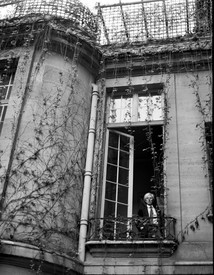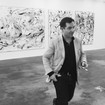
Christian Malycha is an art historian, curator, and member of the executive board of Kerber Artbook Publishers. Former artistic and executive director of the Kunstverein Reutlingen, since 2002 he has produced many exhibitions and publications on twentieth- and twenty-first-century painters and sculptors, among them Georg Baselitz, Albert Oehlen, and Franz West.
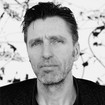
Albert Oehlen’s oeuvre is a testament to the innate freedom of the creative act. Through expressionist brushwork, surrealist methodology, and self-conscious amateurism he engages with the history of abstract painting, pushing the basic components of abstraction to new extremes. Photo: Oliver Schultz-Berndt
Christian Malycha The new paintings are quite unexpected!
Albert Oehlen By all means, I wanted a change.
CM You painted them in Los Angeles, right?
AO Yes, I was in LA and started to paint in acrylics and watercolors. These ten paintings evolved along the way. I didn’t intend to make anything new, though—it was an experiment, rather, and about the employment of different materials.
CM You wanted a change without knowing in advance where it would lead you?
AO The paintings deal with all of that, the whole development. You can see how I’m realizing the possibilities, and what interests me. You can see both ends of the spectrum.
CM The void and the abundance?
AO That’s basically it. And then there are the varying degrees of “mark-making” and “scrubbing about.”
CM Distinct signs or dissected planar textures. What role does the application of color play in this?
AO That goes hand in hand with your choice of material. The application influences your movements, and that’s where the real fun begins. The colors don’t differ so much in terms of density and radiance. Only if a color sways you to paint differently do things get exciting.
CM In the early 1980s, when you started out, your painting was hard and calculated, emotion was rejected. Looking at the new paintings, one might wonder whether you feel differently today. Is there a sensuous dimension?
AO No, that’s not a category I plan for. Still, things are always coming out that I take delight in, even though I didn’t necessarily intend them. If the paintings are more colorful now, and brighter, I didn’t aim for that, but you know how it goes. And then I say to myself: “Oh my, that’s not so bad after all!”
CM That’s what you can see. The color has enormous presence—it’s clear, it beams—but then again there are nuances and wry contrasts. It’s tender, and due to its transparency it takes on a marvelous depth, opening up the whole pictorial space.
AO What a pleasure to hear! I had no intentions with these paintings, everything just evolved the way it did.
CM Your brushstroke is immediately recognizable but the new paintings are completely different from the Tree Paintings, the Finger Paintings, and your collages. There’s no figure, no object, no writing . . . only color. You told me you’ve been thinking about some of your older paintings. What’s the tie-in? What were you looking at?
AO I didn’t look at anything, it just happened—there’s no conscious reference. But I suddenly just found myself back in the year 1995, 1996 . . . and just like back then, the new paintings arose out of a refusal of certain things: there’s no figuration and I wanted no composition, wanted to disable composition.
CM No preconceived image, but bold gestures?
AO It would be impossible, for example, to execute these things by working from sketches.
CM There’s resistance in their openness?
AO For sure—they refuse composition.
CM You’ve said you see a “reluctant order” in these paintings—what does that mean? Gestures and movements of color carrying and escalating each other within the painterly process?
AO Exactly. A painting has to be “gathered up.” Nothing is intended but something happens. What evolves hasn’t been aimed for, it grows . . . while you’re struggling to prevent certain things. The painting takes a stance while you’re constantly rapping your own knuckles.
CM What part do chance and control play?
AO It’s an everlasting struggle. Brushstrokes, for example, almost never turn out how you wanted them to. The question is what you call chance. . . . Control may be the choice not to correct anymore, you see something you don’t get rid of. That’s no longer chance. How something ends up on a canvas is probably chance, but if it stays on, it isn’t.
I’ve always been looking for trouble. I’m just a “surfin’ bird,” looking for stress.
Albert Oehlen
CM With all their serenity, freedom, and openness, the paintings are astoundingly precise. That’s contradiction in itself, being both “free” and “precise.”
AO A while ago I read a book on how John Cassavetes made his movies. It was inspiring, or at least affirmative. Anyway, I got the feeling of some kind of kinship. He was very spontaneous while filming; only later, during the editing, did he come close to the real film itself. And there you have it: both maximum chance and maximum control. I thought, that’s it. I recognized the attitude and rejoiced. But there’s always the ordeal of the process. For Cassavetes it was extreme, and for me it is too. You’re searching for something without knowing what you’re looking for.
CM You could have made it easy for yourself, saying “That’s my painting” and being done with it. Instead, every time you start over from scratch.
AO That’s true. It really is—
CM Is this a perpetual present?
AO I have the feeling that my paintings, that my art altogether, is pretty much in line with my time, that I’m contemporary. Strangely enough. That conclusion took me quite a while. I’m not flattering myself; I could be dreaming of being ahead of my time, or classic. But I’m not dreaming about anything, I’m reckoning or supposing that I’m in line with my time. Without asking for it or idealizing it, I think that’s how it is.
CM From the very beginning, you’ve questioned any given image.
AO I’ve always been looking for trouble. I’m just a “surfin’ bird,” looking for stress.
CM And still everything comes together?
AO I hope that everything makes sense. But I don’t have to make sense, I just make paintings.
CM Earlier paintings: self-assurance or self-bewilderment?
AO That’s funny, I was just talking with Carroll Dunham about the same thing. For him it’s exactly the same. Somewhere in your past there’s always a period you don’t like, you don’t understand why you painted these paintings at all. But it shifts—five years later it’s a different period you’re doubting. Therefore, self-bewilderment, but not consciously sought out. Personally, I could work very well without ever looking back, but for your exhibitions you’re doing it constantly.
CM Are the ’90s reassuring for your new paintings, then?
AO I’m not sure whether the ’90s paintings might not even be the current period . . . and nonetheless I situate myself close by. Might be possible.
Artwork © Albert Oehlen
